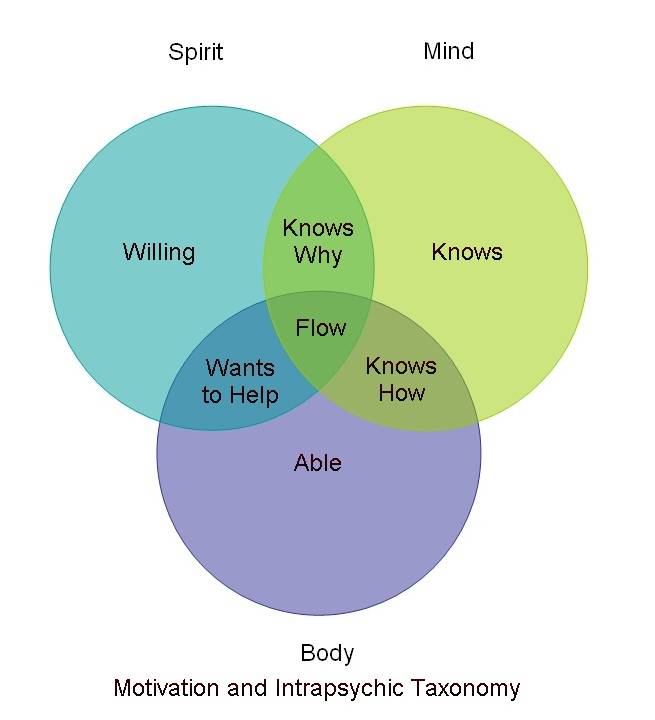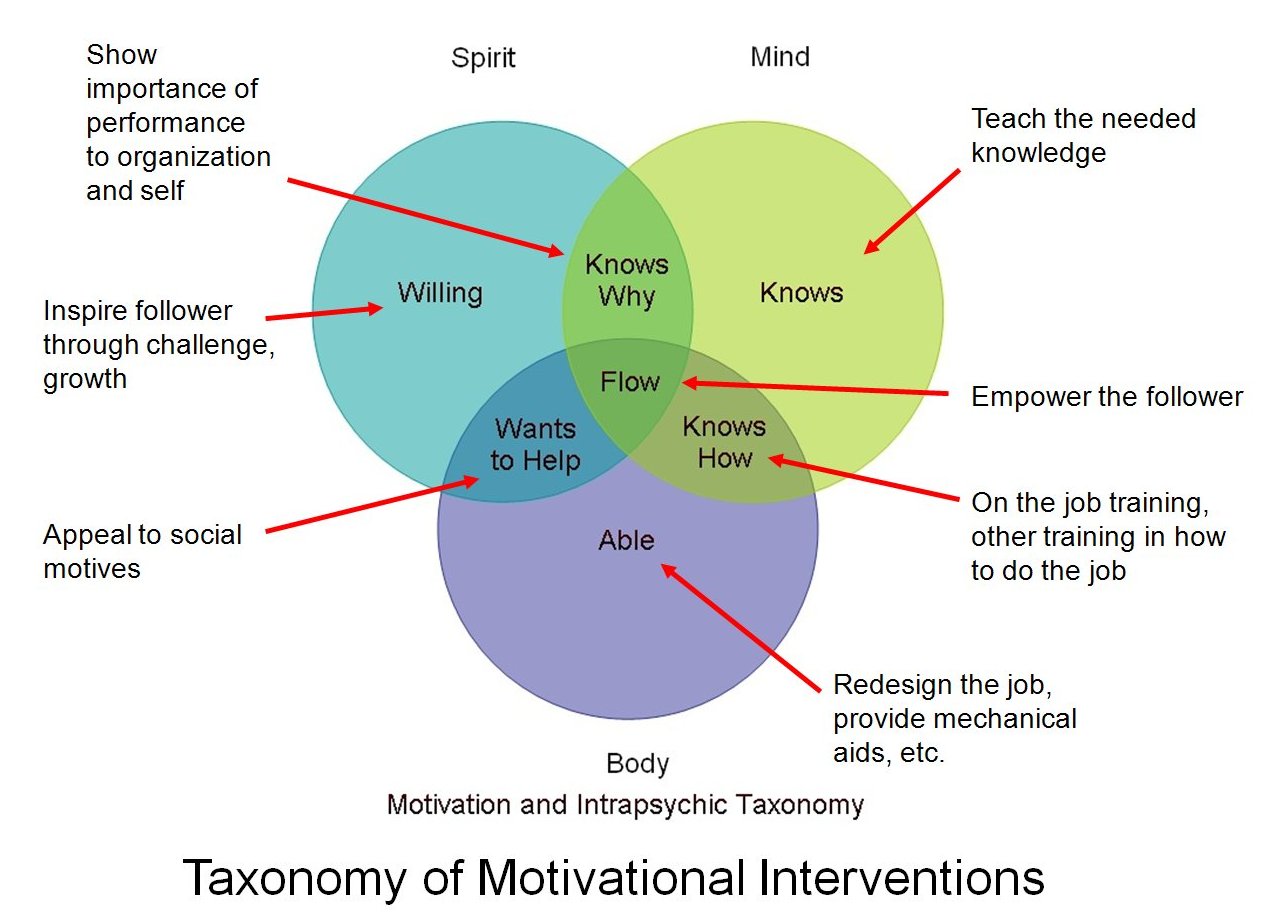Leadership, Motivation, and the Intrapsychic Taxonomy
Conversion of papers on this topic is underway. An initial set of considerations is presented as a place holder for a more full development:
One of the key roles of a leader is managing the motivation of self and followers. This depends in part on an assessment of the readiness of followers. Where readiness is lacking, either due to motivation or skills deficits, it is the job of the leader to grow followers so they are both motivated and able to do what is desired. In casting this assessment and both motivational and training interventions on the intrapsychic taxonomy, we find the following, depicted in Figure One.

Figure One. Intrapsychic Taxonomy and Follower Readiness
Given this typology, and using set theory, seven sets of readiness can be assessed. Prescriptive interventions are fairly straightforward from this needs set, as seen in Figure Two. If a person is not able (body), then job aids might be used like machine assist or even automation to replace the human. If the worker does not know (mind) then a training intervention is needed. If the worker is not willing, then a motivational intervention is needed.

Figure Two. Taxonomy of Motivational Interventions
Whereas a declarative knowledge training intervention is needed where knowing how involves only the mind and not how to do something, if one needs to know how to perform a task then the training intervention needs to involve also procedural knowledge, often through on the job training. This opens the possibility that the effective intervention may be one that combines teaching knowledge with motivational interventions, combines a physical intervention with a motivational intervention, or combines all three.